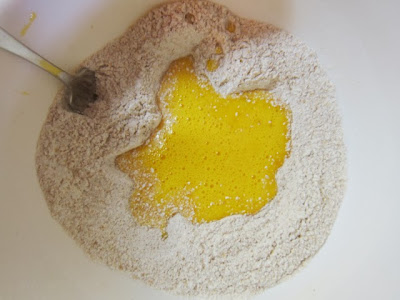It seems that most
Americans don’t know how to cook or prefer not to cook. They buy thirty-one
percent more packaged food than fresh food. Thirty percent of all meals are
eaten in the car. Twenty-five
percent of Americans eat a fast food meal every day. Only forty-three percent
of American families eat a meal together every day. My grandmother would be
appalled, my mother would be appalled, and I am appalled. How did this come to
pass?
At one time within my
memory, everybody cooked, rich and poor alike. I remember sitting in the
kitchen of an impoverished schoolmate. Her mother was preparing supper, mixing
a flour concoction that I didn’t recognize. What was clear to me, though, was
that this family would have a very sparse supper, but a homemade one.
The just food newsletter, which came in the mail yesterday,
announces with pride that their food bank is now offering classes that will
help their low income clients become more self-sufficient, including cooking
classes.
Great, I thought. This is
exactly what is needed, a revival of cultural cooking skills. Then I read
further.
“Through these classes
clients have learned to make chicken noodle soup from scratch, coconut curry
chicken with white jasmine rice, cilantro salad, jambalaya, and quinoa salad.”
Hold it! Coconut curry
chicken with white jasmine rice?
What good will that lesson do for a woman who is trying to feed her family on
food stamps? The cheapest jar of curry powder I could find cost $3.69. White
jasmine rice, $1.32 per pound. Coconut milk per can, $2. We haven’t even bought
the chicken yet.
The white jasmine rice
isn’t even nutritious. All that’s left in white rice after processing is
starch. All the vitamins and minerals have been discarded. Long grain brown
rice costs less ($1.12 per pound) and packs nutrients.
Just a word or two about
cilantro salad, which I have never made nor eaten. Every
cilantro salad recipe I’ve seen calls for several other expensive ingredients,
such as shallots ($4.95 per pound), asparagus, and toasted sesame oil. I'm not even going to discuss jambalaya (shrimp, sausage, chicken, spices, etc.) or quinoa ($6.70 per pound).
It’s not surprising that
the cooking classes are the brain child of a former “executive chef” at a local
restaurant. Personally, I think the program would do more good if the food bank found a couple of grandmothers from the German Baptist community to teach the classes, grandmothers who have years of
experience cooking nutritious meals on a shoestring budget for their families.
They know how to make delicious no-frills meals using a few common ingredients,
including fresh vegetables and fruit.
A grandmother who knows how
to make whole grain bread could help the clients eat more nutritious food for
far less money. A five-pound bag of whole wheat flour costs $2.35. It will make
two and a half loaves of bread that weigh nearly two pounds. Yeast is 62¢ a .75-ounce packet. Not including the cost of heating the oven, a loaf of whole wheat
homemade bread costs less than $2, even if one uses a little honey and oil in
the dough. Even better, if the baker has sourdough starter, no yeast is needed.
But what do I know? I’m
just an old grandmother. By the way, every few years I buy a two-pound package of Fleischmann's dry yeast for $4.88. This yeast is 15¢ an ounce, while yeast in packets is 84¢ and ounce. It keeps its vitality for years in the freezer.
Copyright
2013 by Shirley Domer











































